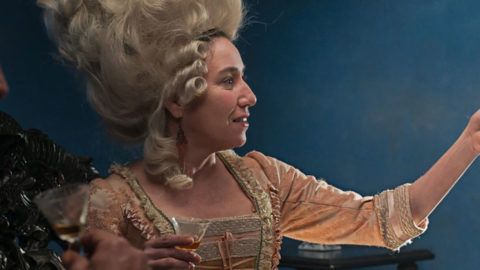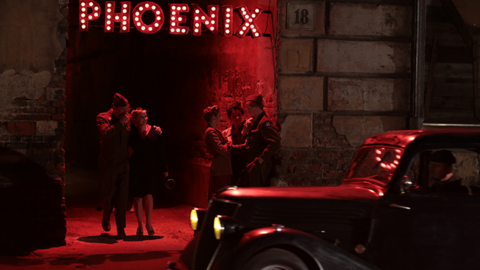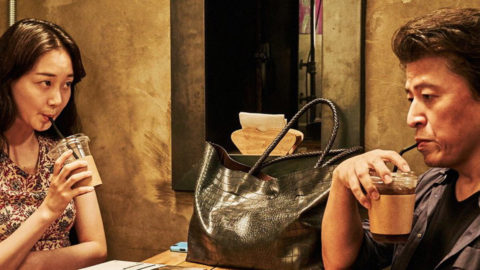Festivals: Toronto
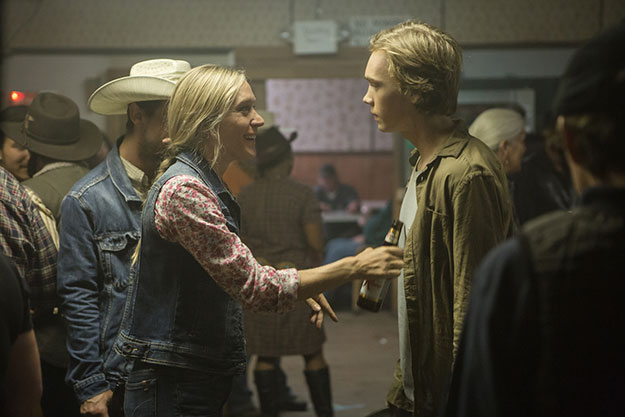
Lean on Pete
As if we needed reminding that film festivals can be a morbid business, Toronto this year offered its fair share of grim reality. When looking at any major sampling of films I could come up with, all roads led to death, of characters central or supporting, man or animal. Each felt seismic in its own way, from the crazed, biblical excesses of Darren Aronofsky’s audience-terrorizer Mother! to the invigorating sense of hope in the face of tragedy in Robin Campillo’s gracious drama about ACT UP activists in Paris, BPM (Beats Per Minute). Yet the film that surprised me the most, with its harsh, matter-of-fact glimpses of mortality was Lean on Pete, the fourth feature by consistently surprising British director Andrew Haigh. Hearing of the film’s basic outline—a Pacific Northwest–set coming-of-age story about a boy and the racehorse he befriends—one would be forgiven in expecting something far more sentimental than what has ended up on the screen. Lean on Pete, based on a 2010 novel by Willy Vlautin, furthers Haigh’s investigations into the mysteries of human interaction that defined his first three, wildly disparate films, Greek Pete (2009), Weekend (2011), and 45 Years (2015), as well as his marvelous HBO series Looking. Despite the potentially cloying nature of the material, he has ended up with a film almost entirely without easy pathos.
Initially, Haigh follows the daily travails and wanderings of his teenage protagonist, Charlie (Charlie Plummer, superb in his emotional restraint), with the unforced realism and plangent artistry one might associate with filmmakers like Gus Van Sant or even the Hou Hsiao-hsien of The Boys from Fengkuei. Though an outsider to the setting, Haigh immerses us in a suburban working-class milieu that is never overly aestheticized. Charlie’s young-ish, single father (Travis Fimmel) treats his son with an authentic mixture of bemused tough love and brotherly affection, though his support wavers into mild skepticism when Charlie stumbles into a job helping out horse trainer Del (Steve Buscemi, in another of his most recent spate of superb character roles). Charlie takes a particular shine to one of Del’s stable of racers, the also-ran Lean on Pete, using the animal to fill a clear emotional need, and growing ever more protective of him. Yet despite the focus indicated by the title, the film has little time for boy-and-his-horse clichés, expanding into something richer, a contemplative portrait of American loneliness and financial struggle that ends up more like Kelly Reichardt’s Wendy and Lucy than The Black Stallion. Two major deaths define Charlie’s unsentimental education, each as off-handedly shocking as it is narratively crucial.
Haigh never makes like he wants to impress, forgoing big, standalone shots and self-conscious compositions, instead allowing the images to simply move the story along from one location to the next. Also refreshingly, he completely avoids anthropomorphizing the animal in any way: it’s noteworthy how studiously he leaves out any horse reaction shots, never leading the audience to buy into Lean on Pete’s essential “spirit” or adorability, crutches in many films with similar subject matter. Like Charlie, the horse just exists, being led through a sometimes beautiful, often treacherous world by others who don’t necessarily know where they’re going or how to get there.
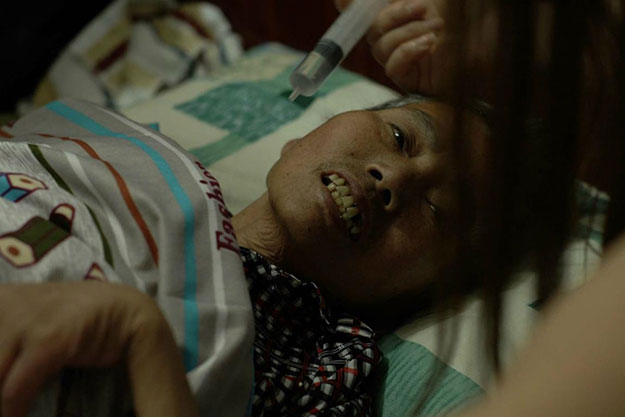
Mrs. Fang
Wang Bing’s documentary Mrs. Fang is also remarkable for what it does not do. For much of the early part of this movie, the celebrated (at least in our more patient, cinephile circles) Chinese filmmaker trains his camera very tightly on the face an elderly woman dying of Alzheimer’s in a small rural village; Mrs. Fang is surrounded by family and neighbors, moving around her body as they sometimes compassionately, occasionally callously discuss her imminent passing. For a while, it seems as though Mrs. Fang is content to be part of a lineage of such great nonfiction films such as Dying at Grace or Silverlake Life: The View from Here, which use the camera as a tool to unflinchingly record human beings close to their final breath. Yet Wang Bing is after something completely different: following a long series of fairly harrowing, extended static shots of the woman, her mouth frequently agape, her lips stretched back from her teeth, as she stares vacantly in our general direction (is she aware of the camera?), the filmmaker goes into different territory, somehow more and less tangible than a portrait of dying. He begins intercutting all this with extended passages devoted to her grown sons, nephew, and other local men, interacting on the street at night, drinking (their shirts often amusingly pulled up over their bellies), and, most frequently, fishing in a local, polluted pond with rods affixed to long, wand-like metal baskets, with which they electrocute and scoop up their limp catch.
The irritating sound of the electric zapper becomes the film’s significant aural motif, and its recurrence is essential: nothing less than a reminder of the fragile border between life and death. The filmmaker has also happened upon a handy aesthetic conceit, oscillating between the tight confines of the dying woman’s bedroom and the men’s fishing pond, two spaces that inform one another obliquely but clearly—it’s so very simple: in both cases, life is there, and then it isn’t. But life and death are also utterly irreducible, perhaps unrepresentable, despite an “unblinking” camera. When it comes to the portrayal of Mrs. Fang’s death, Wang, whose camera had been so frighteningly intimate in surveying this woman’s final days, ultimately retreats, keeping near the back of the room as the mourners move about the space. It seems less a choice made out of civility or squeamishness than an acknowledgment that there are certain truths that the camera perhaps cannot really capture.
The use of technology for recording images of mortality is surely a central theme of Michael Haneke’s Happy End—though it’s just one of many themes in a film that amounts to a kind of Haneke hit parade. Beginning and ending with cell-phone Snapchat videos of increasingly alarming content, the latest from Austria’s methodical movie taskmaster dispassionately surveys the rot and decline of a wealthy industrialist French family. No surprise there, but the near cartoonishness with which he paints the members of this clan of white, privileged monsters might clue us into the fact that he’s not taking it all quite so seriously. Isabelle Huppert’s icy matriarch ineffectually babies her rudderless lout of a son (Franz Rogowski), punishing him for misdeeds she’s undoubtedly brought about with her own enabling; her remarried brother (Mathieu Kassovitz) is a pathetic chronic adulterer spied upon by his adolescent daughter Eve (Fantine Harduin), who has come to live in the family’s mansion after her mother overdoses on medication and who serves as both an ironic moral center and a kind of avenging angel; withering patriarch Jean-Louis Trintignant is beginning to lose his marbles (or is he?), urging whoever will listen to help him shuffle off this mortal coil. The film unfolds in an episodic manner so that certain, discrete moments recall characters and incidents from Haneke’s Benny’s Video, Code Unknown, Caché, The White Ribbon, and Amour—yet here he replaces those films’ shock tactics with mild, almost blasé frustration. The title indicates an ironic reckoning with the end, and one might expect a major comeuppance for this cast of jerks. Nothing doing. The ultimate shrug with which Happy End wraps up might be its greatest strength.
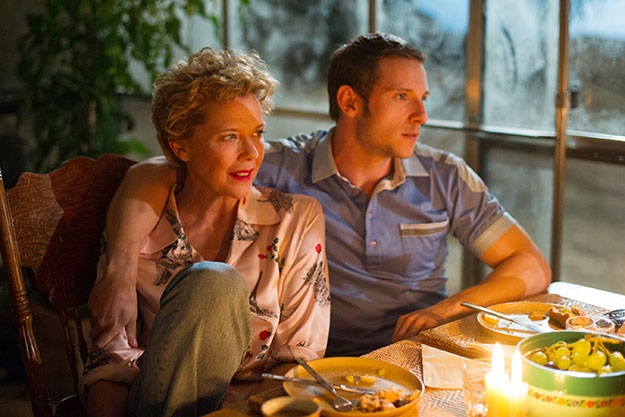
Film Stars Don’t Die in Liverpool
Oddly, the most egregiously drab of all the films mentioned here is the one that seems like it would be most playful: Paul McGuigan’s Film Stars Don’t Die in Liverpool, which has the dubious distinction of featuring a brilliantly cast Annette Bening as Gloria Grahame and then proceeding to drain her of vivacity and life in favor of a funereal trudge toward indignity and death. Focusing on the twilight years of Hollywood’s unlikeliest Oscar-winner (each of Grahame’s tremulous, blowsy blondes is a thing of beauty, but not the sort usually honored by Hollywood), and specifically her relationship with the much younger Liverpudlian actor Peter Turner, who wrote the memoir on which the film is based, Film Stars Don’t Die is initially a breeze, putting to good use the undeniable chemistry between its leads: Bening and Jamie Bell, who as young Mr. Turner finally has a juicy leading role with which he can flaunt his enormous sex appeal. Meeting cute in a London hotel in 1979, the legend and the neophyte, who’s as young as her son back in the States, get into a little disco dancing in her room (a terrifically performed, shot, and edited number) and go see the newly released Alien, with Peter diving into Gloria’s arms during the jump scares. (But fans want to know: when did Grahame find the time to shoot her unforgettable supporting role in Chilly Scenes of Winter, shot in ’79?)
Of course, McGuigan’s film, in deference to the tragic trajectory of Grahame’s life as detailed in Turner’s memoirs, needs to have more on its mind than the adorable stages of early courtship. But because Bening so nails the actress’s indelible pout and saucy cadences, and because Bell is so good at conveying the barely repressed boyish eagerness behind his masculine strut, it’s ultimately a little dismaying to see it all devolve into a politely sad narrative of cancer conversations and bedside vigils. Nevertheless, there’s a genuine reckoning with the private face of stardom here that elevates the film miles above caricatured piffle like My Week with Marilyn, and Bening succeeds in leaving an impression of earthy sensuality rather than physical decay. Also, McGuigan manages to give Gloria a happy end—via flashback, at least.



